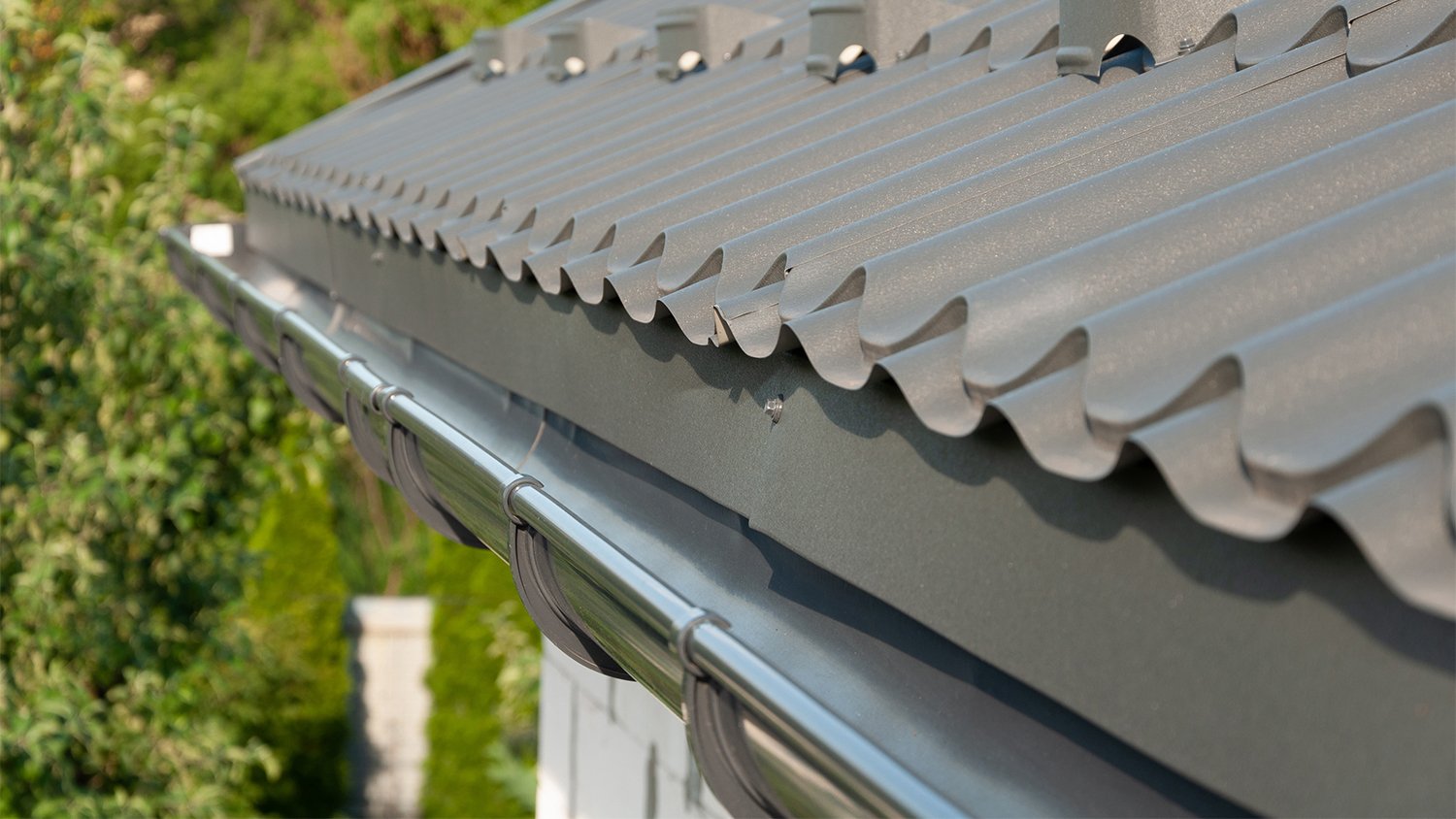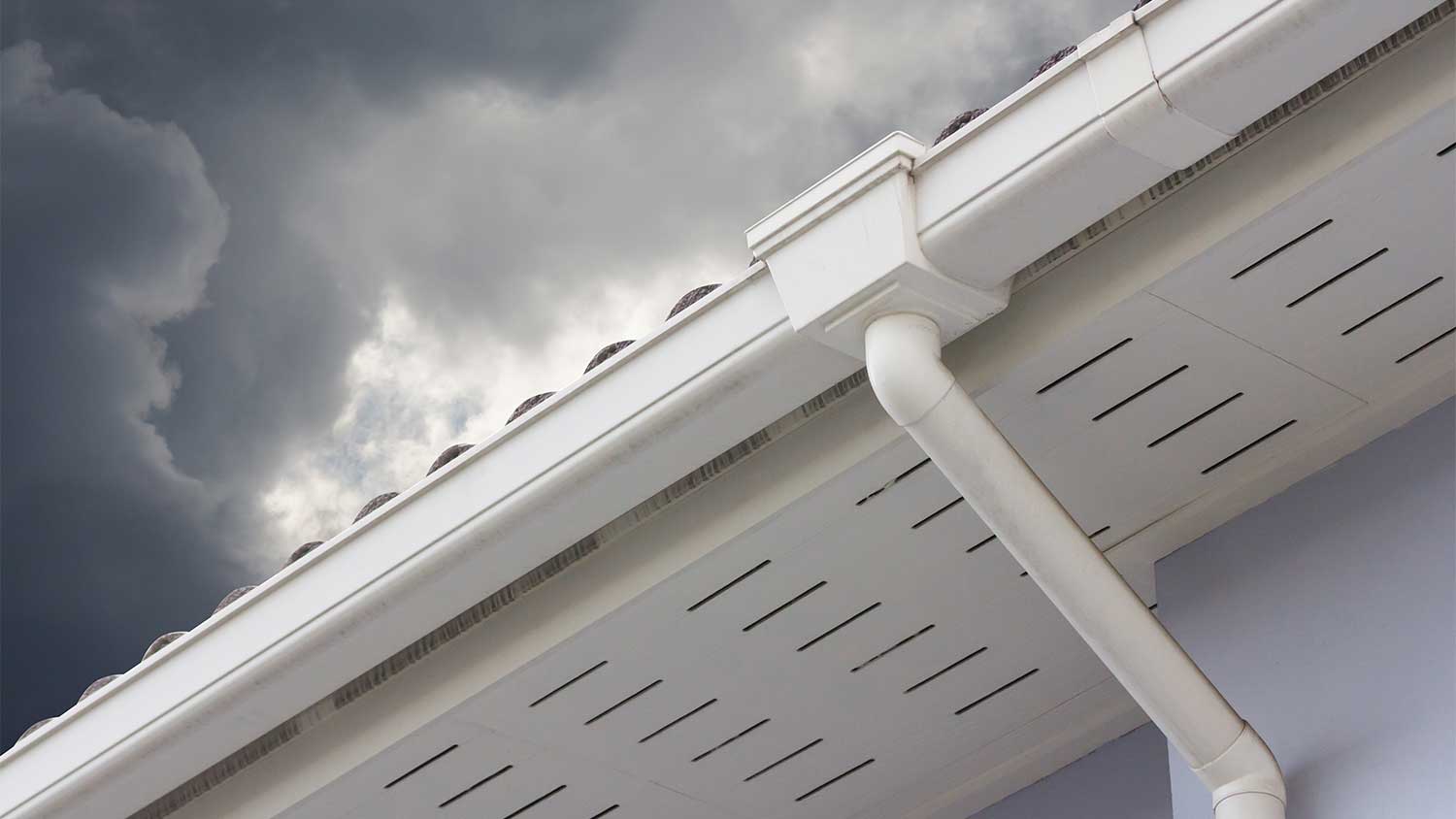
Wondering how much gutter installation costs? We’ll break down prices by material, gutter type, and other factors impacting overall gutter costs.
Know when it's time for your gutters to call it quits
If you live in an area where it rains cats and dogs, you need long-lasting gutters to protect your home and its foundation. But how long do gutters last? The average life span of gutters is around 20 years, but depending on the gutter material and whether you go seamless, they can last as long as 100 years. Read on to learn about the life span of various gutter types and how to help them last for years to come.
How long your gutters will last depends largely on what they’re made of. For example, vinyl gutters have the shortest life span, lasting 10 to 15 years, while more sturdy materials such as copper can last up to 100 years. However, just because it’s the most durable material doesn’t mean copper is the right gutter choice for your home—plus, they’re quite pricey. To narrow down the best options, it’s best to talk to an experienced contractor who can recommend the right fit for you.
Below is a general gutter life span based on the type of gutters:
Aluminum: 25 years
Zinc: 50 years
Galvanized Stainless Steel: 15–20 years
Stainless Steel: 50 years
Vinyl: 10–15 years
Wood: 20–50 years
Copper: 100 years
Cast Iron: 50 years
“Ultimately, the more expensive the materials, often the longer lasting the gutter system,” says Jose Figueroa, Expert Review Board member and crew supervisor and sales representative at Artisan Quality Roofing in Apex, North Carolina. “However, unless you plan to live in your home for more than 20 years, seamless aluminum is an affordable, reliable option.”

To ensure your gutters reach their maximum life span, stay on top of cleaning and maintenance. This means cleaning your gutters at least two to four times a year, especially if you have several trees in your yard. You can also install gutter guard systems, which prevent debris from collecting in your gutters and eliminate the need to clean them regularly. If you notice any signs of damage to your gutters, call in a local gutter repair contractor ASAP to avoid any further damage.
To increase your gutters’ life span, clean them regularly. Ideally, you’ll want to clean your gutters twice a year, but you may need to do it up to four times a year. If you want to ensure the gutters are cleaned properly, hire a gutter cleaning service near you. The cost of cleaning gutters usually averages between $119 and $234, but depending on the type, length, and location, cleanings can cost up to $400.
If you have several tall trees near your home, you can install gutter guards to help keep gutters free from debris.
“Another way to extend the life of your gutters is to install quality gutter guards,” says Figueroa. “They keep debris out of the gutters—which can deteriorate and damage the gutters—and allow for proper water flow.”
You can also reapply gutter sealant to help improve your gutter system’s durability. This includes reapplying a seal to the gutters every five to 10 years, though you may need to reapply more often if you live in areas with heavy rain or snow.
According to data from Angi customers, the most common problem homeowners report with their gutters is sagging or loosening, which makes up about 26% of cases. Another 14% say their downspout or gutter is clogged, disconnected, or broken. The good news? Many of these issues can be prevented—or at least minimized—with regular cleanings, inspections, and prompt repairs.
If your gutters are cracked, leaking, overflowing, or not flowing at all, it is likely time to replace them. The best way to get a look at your gutters at work is to walk around the exterior of your home while it’s raining. This way, you can observe any trouble spots or see just how well (or not!) your gutters are doing their job. Other signs it’s time to replace your gutters are if they’re sagging, if nearby watermarks are present, or if the paint around the gutters is chipping.
Replacing damaged gutters can be a DIY job—depending on the extent of the replacement, the material, and the gutter style. But in most cases, gutter replacement projects are better left to the pros. It's important that you know how to install gutters before embarking on this project. Proper gutter installation involves having the correct slope and length to ensure water correctly drains through the gutter system without damaging your property.
From average costs to expert advice, get all the answers you need to get your job done.

Wondering how much gutter installation costs? We’ll break down prices by material, gutter type, and other factors impacting overall gutter costs.

This guide will give you an idea of how much you can expect to pay when getting new seamless gutters installed when accounting for removal, labor, and different gutter materials.

Gutter repair costs may not be as high as you think—but it depends on the type of damage you're addressing. Learn why you need to hire a gutter pro for this work.

Repair your gutters to reduce potential water damage and basement flooding. Review these gutter repair questions for when you talk with a pro.

Seamless gutters are a durable and low-maintenance solution for handling water drainage. Use this guide to learn all about whether seamless gutters are right for your home.

Have you noticed overflowing gutters when it rains? Here are five common problems that could be causing the deluge of water and what you can do about it.